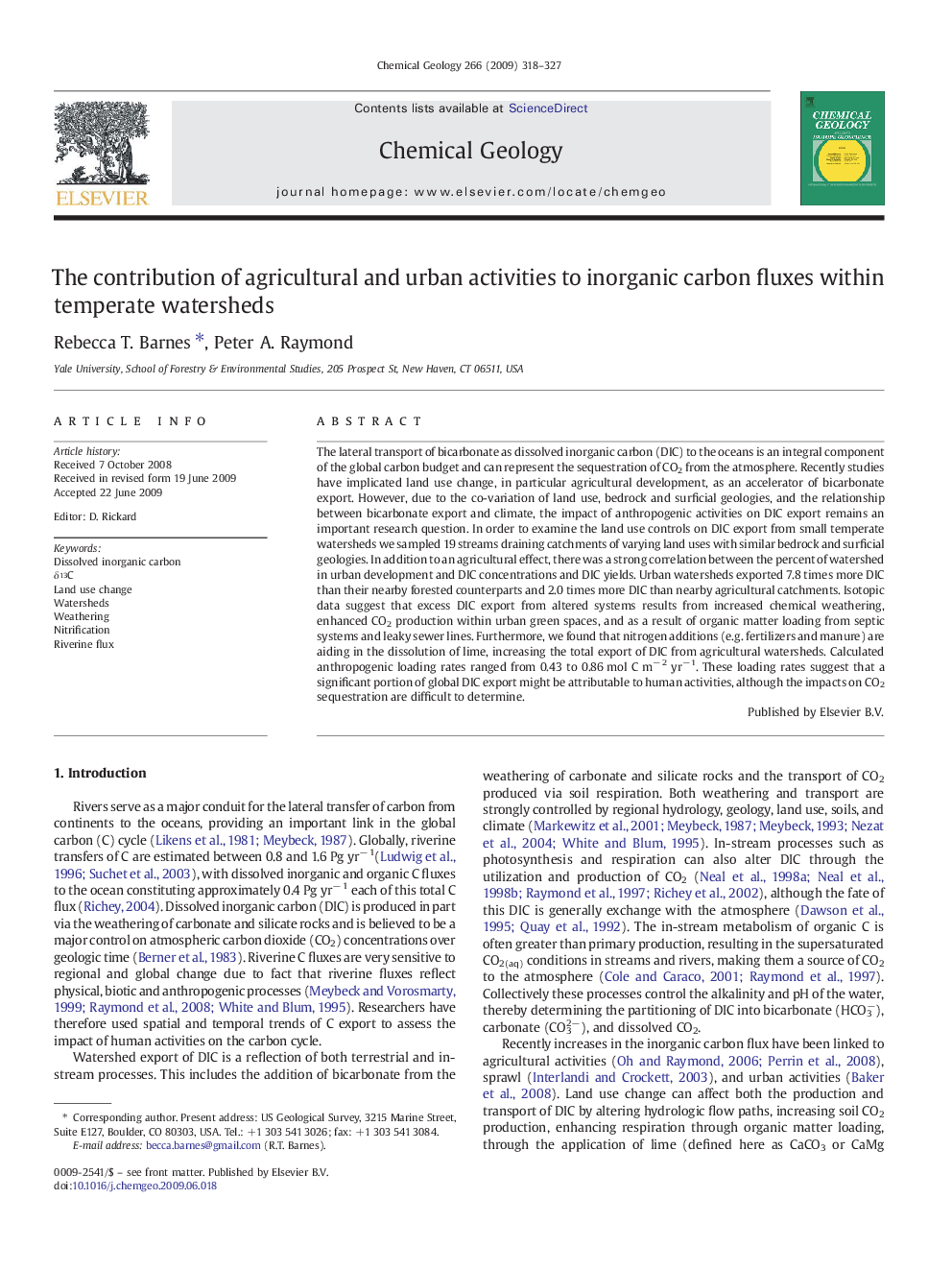| کد مقاله | کد نشریه | سال انتشار | مقاله انگلیسی | نسخه تمام متن |
|---|---|---|---|---|
| 4700203 | 1637701 | 2009 | 10 صفحه PDF | دانلود رایگان |

The lateral transport of bicarbonate as dissolved inorganic carbon (DIC) to the oceans is an integral component of the global carbon budget and can represent the sequestration of CO2 from the atmosphere. Recently studies have implicated land use change, in particular agricultural development, as an accelerator of bicarbonate export. However, due to the co-variation of land use, bedrock and surficial geologies, and the relationship between bicarbonate export and climate, the impact of anthropogenic activities on DIC export remains an important research question. In order to examine the land use controls on DIC export from small temperate watersheds we sampled 19 streams draining catchments of varying land uses with similar bedrock and surficial geologies. In addition to an agricultural effect, there was a strong correlation between the percent of watershed in urban development and DIC concentrations and DIC yields. Urban watersheds exported 7.8 times more DIC than their nearby forested counterparts and 2.0 times more DIC than nearby agricultural catchments. Isotopic data suggest that excess DIC export from altered systems results from increased chemical weathering, enhanced CO2 production within urban green spaces, and as a result of organic matter loading from septic systems and leaky sewer lines. Furthermore, we found that nitrogen additions (e.g. fertilizers and manure) are aiding in the dissolution of lime, increasing the total export of DIC from agricultural watersheds. Calculated anthropogenic loading rates ranged from 0.43 to 0.86 mol C m− 2 yr− 1. These loading rates suggest that a significant portion of global DIC export might be attributable to human activities, although the impacts on CO2 sequestration are difficult to determine.
Journal: Chemical Geology - Volume 266, Issues 3–4, 30 August 2009, Pages 318–327